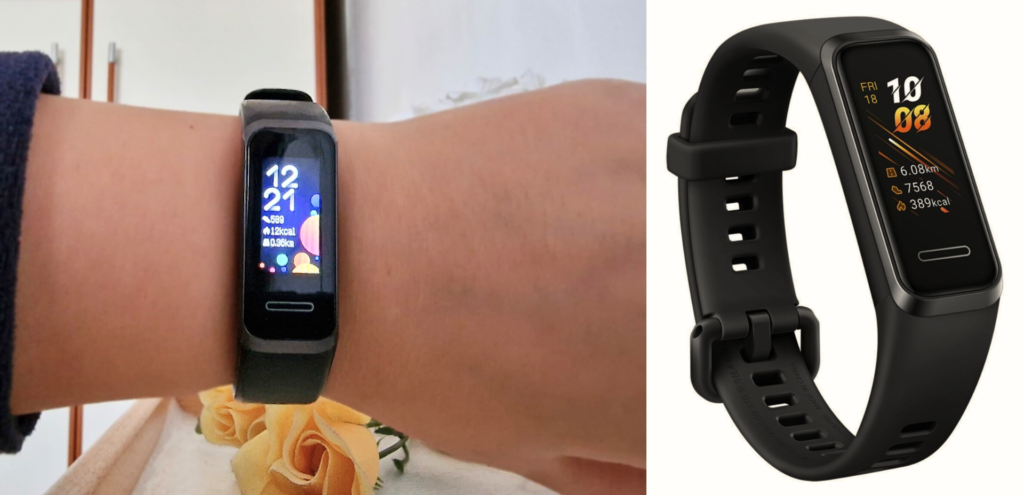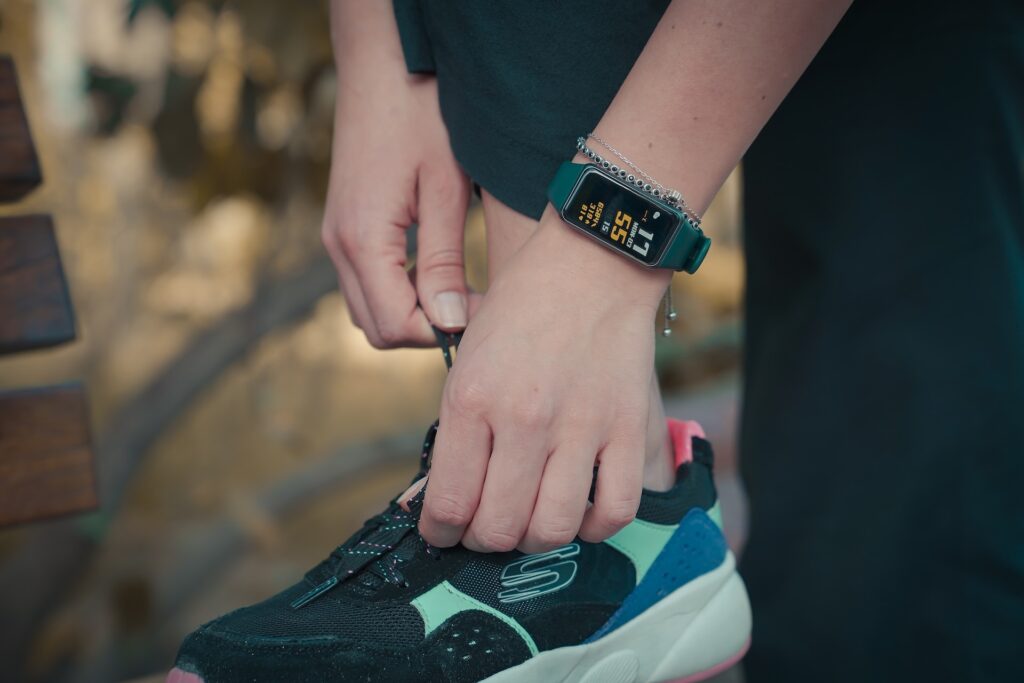This article may contain affiliate links. If you make a purchase through these links, we may earn a small commission at no extra cost to you. We promote only products we believe in and use ourselves. Your trust is important to us. Thank you for your support, which helps us continue providing valuable content for personal growth and lifestyle excellence.
Having trouble sticking to your fitness routine? Do you often have short bursts of motivation, when it feels like you could do anything you put your mind to, only to then lose all that motivation and revert back to old habits?
Maybe you manage to follow the routine you set for yourself for a few days or a couple of weeks, but then life gets in the way. Maybe you start thinking: “I’ll skip the workout today, I really don’t feel like it.”
Or “I’m too tired to hit the weights tonight.”
Or “I’d rather just watch TV, it won’t make that big of a difference anyway.”
But it does.
It always does.
Because that one skipped workout most likely turn into two, then three, and before you know it you’ve lost all momentum and getting back into the routine will be that much harder.
So how can you avoid this kind of situation? Is there something you can do to make sure you’ll stick to it and not lose motivation?
Let’s explore the strategies that will help you overcome these hurdles, stay motivated, and ensure you stick to your fitness goals for the long term.
1. Identify Your “Why”
Understand your deeper reasons for wanting to get in shape or make a change. Your “why” could be to improve your health, boost your self-esteem, set a positive example for your family, or simply to feel better. When you have a strong, personal reason driving you, it can help maintain motivation.
Once you find your why
- Keep around with reminders of it: Something as simple as a photo in your wallet could suffice. Alternatively, you could make your “why photo” your screensaver on your phone/PC, or you could make a motivational video for yourself and watch it every morning or before your workouts, like I did. You can get creative with this and find what works best for you.
- Create a Vision Board: Visual representation can be powerful. Create a vision board by cutting out pictures and quotes that a2. lign with your “why.” Place it where you’ll see it daily, like on your bedroom wall or workspace, as a constant reminder of your goals.
- Write a Letter to Your Future Self: Imagine the future version of yourself who has achieved your fitness goals. Write a letter from that perspective, describing how it feels, the benefits you’ve gained, and why you’re grateful for the journey. Read this letter when your motivation wanes.
- Visualize Success Regularly: Set aside time each day for visualization exercises. Close your eyes and vividly imagine yourself reaching your fitness goals. Feel the emotions, see the details, and experience the sense of accomplishment.
- Use Positive Affirmations: Develop a set of affirmations related to your “why” and recite them daily. These positive statements can reinforce your commitment and help shift your mindset in the right direction.
- Reflect Regularly: Take time to reflect on your “why” and the progress you’ve made. Reviewing your reasons for starting your fitness journey can reignite your motivation, even during challenging moments.

2. Create a Workout Schedule
Creating a Workout Schedule is a foundational step in your fitness journey. It helps you organize your exercise routine, ensuring that you prioritize your health and fitness just as you would other important commitments in your life.
Importance of a Workout Schedule:
- Consistency: A workout schedule provides a structured and consistent approach to your fitness routine. By designating specific days and times for exercise, you establish a habit that becomes a natural part of your life.
- Time Management: In our busy lives, time management is critical. A schedule helps you allocate dedicated time for your workouts, preventing conflicts with other obligations.
- Accountability: When you schedule your workouts, you create a sense of accountability. Treating these appointments with the same importance as other commitments means you’re less likely to skip them.
- Prioritization: Your fitness should be a priority for your well-being. A workout schedule sends a clear message that you value your health and are committed to maintaining it.
How to Create an Effective Workout Schedule:
- Choose Realistic Times: Select times for your workouts that are feasible and fit your daily routine. Morning workouts may be suitable for early birds, while evenings may work better for night owls.
- Be Specific: Clearly define the days and times you plan to exercise. Specificity helps you plan your day around your workouts.
- Variety: Incorporate a variety of workouts into your schedule to prevent boredom and target different muscle groups. For example, designate specific days for cardio, strength training, flexibility, and rest.
- Start Slow: If you’re new to regular exercise, start with a realistic schedule that you can comfortably maintain. As your fitness level improves, you can gradually increase the intensity and duration of your workouts.
- Progressive Overload: As you become more accustomed to your schedule, consider gradually increasing the challenge of your workouts to continue seeing results.
- Rest Days: Don’t forget to include rest days in your schedule. Rest is essential for recovery and preventing burnout. Overtraining can lead to injuries and decreased motivation.
- Adjust as Needed: Life can be unpredictable, and sometimes your schedule may need adjustments. Be flexible and willing to rearrange your workouts when necessary to accommodate unforeseen circumstances.
- Plan Ahead: Plan your workouts in advance. Knowing what you’ll be doing each day can reduce decision fatigue and make it easier to stick to your schedule.
Life can be unpredictable, so be flexible with your workout schedule. For instance, if you can’t make it to the gym, find ways to stay active at home or outdoors.

Sign up to recieve our FREE fitness planner and get started on your journey to a healthier, more active lifestyle! Don’t miss out! 💪
3. Incorporate Variety in Workouts
Incorporating Variety in Workouts is a fundamental aspect of maintaining a successful and engaging fitness routine. It not only prevents monotony but also offers several benefits for your overall health and motivation.
Ways to Incorporate Variety in Workouts:
- Try New Exercises: Experiment with exercises you haven’t tried before. Whether it’s different strength-training moves, yoga poses, or bodyweight exercises, exploring new techniques keeps your routine exciting.
- Explore Different Sports: Engaging in sports like swimming, tennis, or martial arts can be both fun and physically challenging. S4. ports provide a refreshing change of pace and offer opportunities for skill development.
- Participate in Fitness Classes: Sign up for fitness classes such as spinning, Zumba, Pilates, or CrossFit. These classes introduce you to structured, group-oriented workouts with diverse routines.
- Change Training Environments: Take your workouts outdoors to enjoy nature while jogging, hiking, or cycling. Altering the training environment can boost motivation and add an element of adventure.
- Embrace Cross-Training: Cross-training involves combining different types of exercises into your routine. For instance, you might alternate between cardio, strength traini
- ng, and flexibility exercises throughout the week.
- Periodization: Implement periodization in your training, which involves changing your workout intensity and focus over time. This can involve cycles of high-intensity workouts, followed by lower-intensity recovery periods.
- Use Fitness Equipment: Incorporate various fitness equipment such as resistance bands, stability balls, or kettlebells. These tools can add variety to your workouts and help you target different muscle groups.
- Online Workouts: Explore online platforms for guided workouts. These platforms often offer a wide range of workouts, from high-intensity interval training (HIIT) to dance workouts, allowing you to pick and choose based on your preferences.
Remember that variety doesn’t mean you have to completely overhaul your routine every day. Small changes, such as adding new exercises or activities to your regimen, can go a long way in keeping your workouts interesting, challenging, and sustainable.
Read my 7 SECRETS to help you enjoy exercise and get REAL fitness results 😉

4. Track Your Progress
Tracking Your Progress is a valuable tool for anyone on a fitness journey. Whether you’re aiming to lose weight, gain muscle, improve endurance, or enhance overall well-being, monitoring your progress is a key component in staying motivated and achieving your goals.
Methods to Track Your Progress:
1. Fitness Journal: Keep a dedicated notebook or digital journal to record your workouts, nutrition, and how you feel after each session. Note your goals and track your daily progress.
2. Fitness Apps: Numerous fitness apps are available that can help you log your workouts, meals, and progress. Many of these apps offer features like goal setting, tracking, and data visualization. I use Huawei Health, because I have their Fitness Tracker:

Purchase it from Amazon:
HUAWEI Band 4 Fitness Tracker3. Wearable Fitness Trackers: Devices like fitness watches or smart bands can monitor your heart rate, steps, distance, and even sleep. They provide real-time data and are particularly useful for tracking daily activity.
4. Before and After Photos: Take photos of yourself before you start your fitness journey and then at regular intervals. Comparing these photos can be a visual reminder of your progress.
5. Body Measurements: Track measurements like your weight, body fat percentage, waist circumference, and muscle size. Regularly measuring these can provide a quantitative perspective on your transformation.
6. Performance Metrics: Keep track of your performance, such as the number of repetitions, weight lifted, running times, or endurance levels. You can see improvements in your abilities over time.
Tracking your fitness progress is a dynamic and motivational tool in your fitness arsenal. It allows you to see how far you’ve come and to make data-driven decisions to keep progressing. The combination of visual feedback and objective data reinforces your commitment and helps you stay motivated on your fitness journey.
5. Set Rewards
Setting Rewards for Your Fitness Journey is a fantastic way to boost motivation and make the entire process more enjoyable. It adds an element of excitement and provides tangible incentives for reaching your goals.
Implementing a Reward System:
- Define Milestones: Set clear and achievable fitness milestones. These could be related to weight loss, strength gains, endurance improvements, or any specific goals you have in mind.
- Choose Rewards: Select rewards that are personally meaningful and motivating for you. They don’t have to be extravagant but should be something you genuinely look forward to.
- Match Rewards to Milestones: Ensure that the size or significance of the reward matches the milestone’s difficulty or importance. Smaller rewards for smaller achievements, and bigger rewards for major milestones.
- Make It Specific: The reward should be directly related to your fitness journey. For example, if you’ve reached a weight loss goal, your reward could be a new set of workout clothes.
- Keep a Record: Maintain a record of your milestones and the corresponding rewards. This record can serve as a visual reminder of your progress and what you’re working toward.

Examples of Rewards:
- Spa Day: A spa day can be a wonderful reward for reaching a significant fitness milestone. It’s a relaxing and indulgent experience that can help you unwind and recharge.
- New Workout Gear: Treat yourself to new workout clothes, shoes, or fitness equipment. These items can boost your motivation and provide practical benefits to your fitness routine.
- Healthy Cooking Class: Enhance your nutrition skills by taking a healthy cooking class. It’s a reward that aligns with your fitness goals and can be an enjoyable learning experience.
- Weekend Getaway: Plan a weekend getaway to a destination you’ve been wanting to visit. This provides a longer-term reward for achieving significant milestones.
- Tech Gadgets: Consider rewarding yourself with a fitness-related tech gadget, like a fitness tracker or smartwatch, to help you monitor and enhance your progress.
- Book or Course: Invest in a book or online course related to fitness, nutrition, or personal development. It’s a reward that supports your ongoing growth and knowledge.
Celebrating Milestones:
- Mark Achievements: Once you reach a milestone, take the time to acknowledge and celebrate it. Recognize your hard work and determination.
- Enjoy the Reward: Immerse yourself in the reward experience. Fully savor the moment and appreciate the effort you put into achieving your goal.
- Document Success: Capture the moment in some way, whether through photos or journaling. This documentation can serve as a source of inspiration in the future.
Remember that the reward system should enhance your fitness journey and serve as positive reinforcement. It’s a fun and motivating way to recognize your accomplishments and stay committed to your health and fitness goals.
6. Compete with Yourself

Competing with yourself is a powerful strategy for self-improvement and sustained motivation in your fitness journey. This approach involves continuously challenging your own capabilities, setting new records, and striving to outperform your previous achievements.
Implementing Self-Competition:
- Define Clear Goals: Start by setting specific and measurable goals. These could be related to endurance, strength, speed, flexibility, or any aspect of fitness you want to enhance.
- Track Your Baseline: Before you begin, establish a baseline measurement for the particular metric you want to improve. For instance, if you’re working on your running speed, measure your current pace.
- Set Benchmarks: Determine milestones and benchmarks that serve as targets. These are the records you aim to break. Make them challenging but attainable.
- Regularly Assess Progress: Periodically assess your progress by reevaluating your baseline measurement and comparing it to your benchmarks. Note your achievements and areas that need improvement.
- Celebrate Milestones: When you surpass a previous record, celebrate your achievement. Recognize the hard work and dedication that went into achieving it.
Examples of Self-Competitions:
- Running: Challenge yourself to run a certain distance in less time, such as completing a 5K or 10K faster than your previous record.
- Strength Training: Aim to lift heavier weights or perform more repetitions for specific exercises, like squats, bench presses, or pull-ups.
- Flexibility: Work on improving your flexibility by setting goals for specific stretches or yoga poses. Measure how far you can reach and aim to increase it.
- Endurance: Set targets for cardio workouts, such as cycling a longer distance or swimming more laps in a set time frame.
- Workout Frequency: Challenge yourself to increase the frequency of your workouts per week or month.
Incorporating self-competition into your fitness routine can be an exhilarating and effective way to keep yourself engaged, challenge your limits, and achieve lasting personal growth. It reinforces your autonomy and empowers you to continuously strive for self-improvement in your fitness journey.

7. Bonus Tips
- Dress the Part: Invest in workout clothes that make you feel good and confident. The right attire can enhance your motivation to exercise and reach your fitness goals.
- Prioritize Self-Care: Make self-care a part of your routine. Ensure you’re getting enough rest, managing stress, and practicing relaxation techniques.
- Remember Your Initial Excitement: Recall the enthusiasm you had when you first started your fitness journey. Remind yourself of your initial reasons for wanting to get in shape.
- Join a Supportive Community: Participate in fitness groups, online communities, or social media groups to connect with others who share similar goals and experiences. The support and camaraderie can be motivating.
- Seek Professional Guidance: Consider working with a personal trainer, nutritionist, or coach to receive expert guidance and tailor your fitness plan to your needs.
- Positive Self-Talk: Replace negative self-talk with positive affirmations. Encourage yourself and focus on your accomplishments, no matter how small they may seem.
- Celebrate Small Wins: Acknowledge and celebrate even the smallest achievements along your fitness journey. Recognizing progress can boost motivation.
- Stay Informed: Educate yourself about fitness and nutrition to better understand the benefits of your efforts and the science behind it.
- Mindset and Visualization: Develop a positive mindset and practice visualization techniques. Imagine yourself achieving your fitness goals and focus on the positive changes it will bring to your life.
- Adaptability: Be flexible and open to adjustments in your fitness routine. Life can be unpredictable, so adapt your goals and plans as needed.
Remember that motivation may fluctuate, but building habits and employing these strategies can help you maintain your commitment to working out and getting in shape over the long term.
What are your strategies for staying motivated on your fitness journey? Let me know in the comments 😉





